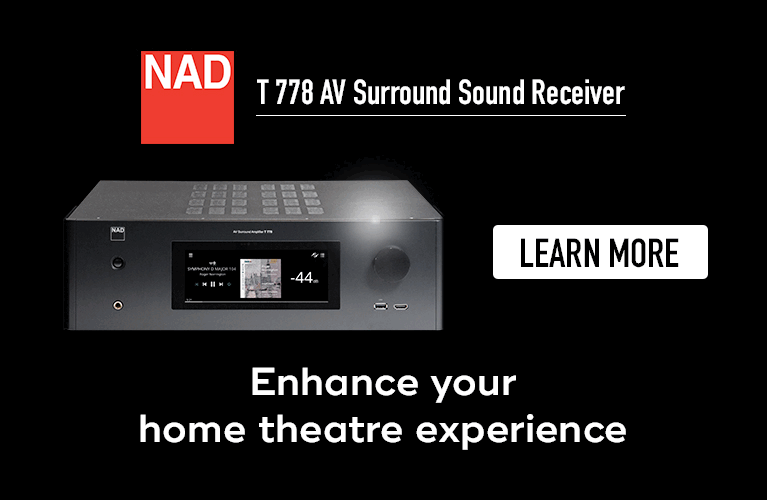 As I sat down to write this review, I thought about how much digital-audio playback has evolved in the 11 years since I wrote my first article for the SoundStage! Network. In 2006, my friends were already well versed in using file sharing to populate their computers with, generally, highly compressed MP3 files. They owned CDs, but many had already copied them to their computers and were playing them from their hard drives. I was still listening almost exclusively to CDs, either through an NAD CD player or a Panasonic Shockwave portable, and I think that players such as the NAD were then still common practice for most audiophiles. Although standalone DACs were again beginning to feature more prominently in the marketplace, many serious high-end manufacturers were still introducing topflight CD players for a consumer base that had only begun to transition to computer playback.
As I sat down to write this review, I thought about how much digital-audio playback has evolved in the 11 years since I wrote my first article for the SoundStage! Network. In 2006, my friends were already well versed in using file sharing to populate their computers with, generally, highly compressed MP3 files. They owned CDs, but many had already copied them to their computers and were playing them from their hard drives. I was still listening almost exclusively to CDs, either through an NAD CD player or a Panasonic Shockwave portable, and I think that players such as the NAD were then still common practice for most audiophiles. Although standalone DACs were again beginning to feature more prominently in the marketplace, many serious high-end manufacturers were still introducing topflight CD players for a consumer base that had only begun to transition to computer playback.
Eleven years later, the way most people listen to music has drastically changed. Very few people now buy CDs, let alone CD players; rather, they acquire music by downloading it, finding it on YouTube, and/or subscribing to an online streaming service. Many are also into vinyl, a medium whose death knell was supposed to have rung with the introduction of the Compact Disc, but that might actually outlive the shiny plastic discs.
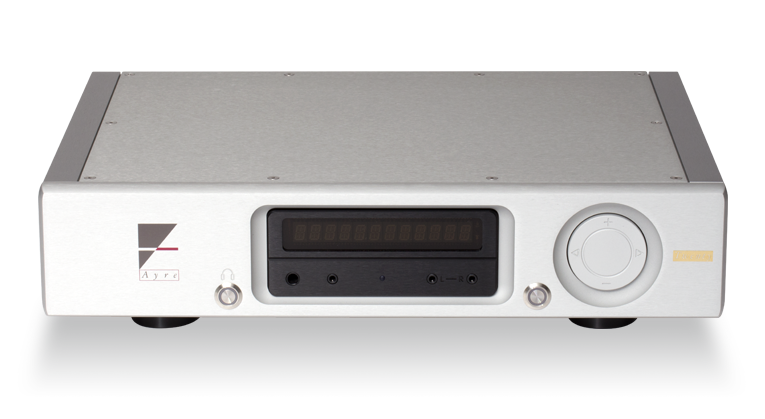
This change in how we listen to music is, in 2017, perhaps best epitomized by the subject of this review: Ayre Acoustics’ QX-5 Twenty ($8950 USD). Although the QX-5 Twenty is, among other things, a DAC, Ayre calls it a “digital hub,” which says a great deal about how they want you to think about it. In addition to converting digital signals to analog, here’s what it does.
Description
Even a cursory reading of the QX-5 Twenty’s info sheet makes it clear: Ayre wants you to know that their newest digital component is no mere DAC or streamer, but is being marketed as the epicenter of your digital universe -- the focal point for all your digital sources. This is made possible by the inclusion of no fewer than ten inputs: two balanced AES/EBU (XLR connectors), three S/PDIF (BNC), three optical (TosLink), USB Type-B, and Ethernet.
Via its XLR or RCA outputs, the QX-5 can be connected to your preamp, integrated amp, or directly to your power amp -- the QX-5 includes a volume control, which means it can also serve as a preamp. And there are three headphone jacks on the front panel.
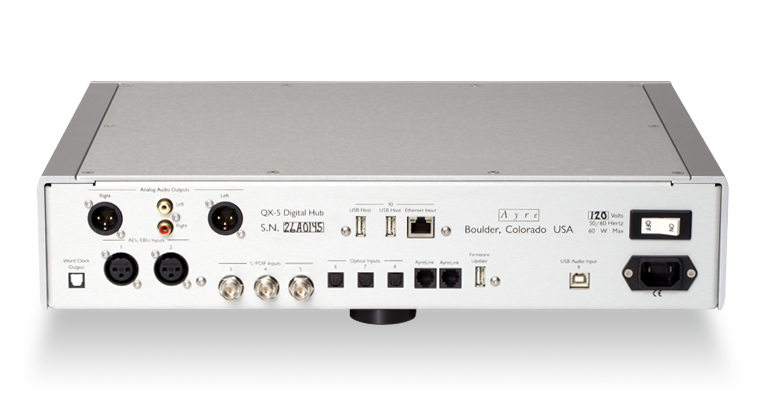
Like its USB input, all of the QX-5’s S/PDIF inputs are asynchronous: incoming data are reclocked to reduce jitter. Asynchronous inputs offer the highest sound quality because, unlike their synchronous counterparts, they’re not slaved to the source component’s clock; instead, they rely on their own master clock to remove jitter, the distortion that occurs when two digital clocks are not in sync. The QX-5’s clocks were developed in collaboration with Morion, a Russian manufacturer of quartz oscillators, filters, and crystals. Said to offer a high level of performance, the clock in the QX-5 is a doubly rotated cut quartz crystal.
In combination with its specially developed clock, the QX-5 Twenty also has an ES9038PRO DAC chip from ESS Technology -- in fact, when launched, it was the only product to include this 32-bit, eight-channel chip. The ES9038PRO, ESS’s flagship DAC, is claimed to have the highest dynamic range (up to 140dB) of any DAC chip on the market. ESS says that their patented 32-bit HyperStream DAC architecture gives the ES9038PRO an incredibly low -122dB of total harmonic distortion plus noise (THD+N), for greater clarity and bigger soundstaging. With such impressive specs, it’s likely that this chip will be used by a growing number of Ayre’s competitors.
All of the QX-5 Twenty’s inputs can accept word lengths of 16 to 24 bits, as well as DSD64; its USB input accepts DSD128. The optical, S/PDIF, AES/EBU, and network inputs accept sample rates from 44.1 to 192kHz, the USB input up to 384kHz. The QX-5 seems to be a flexible device able to decode everything from “Red Book” CDs to high-resolution audio.
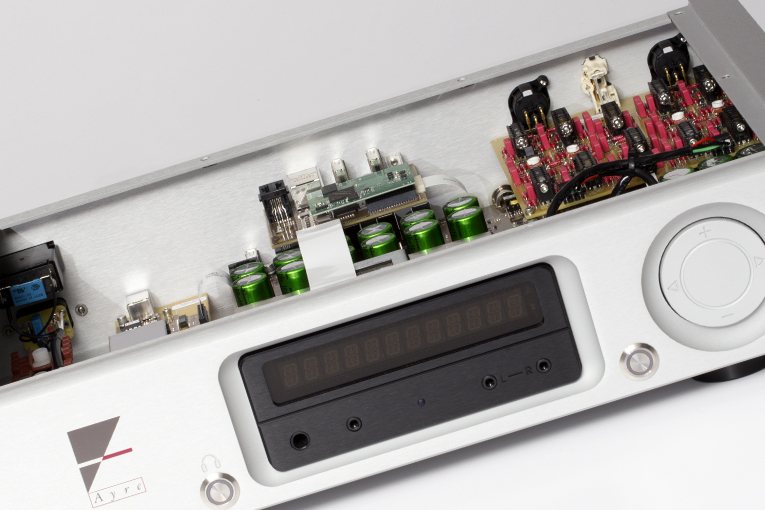
The QX-5 Twenty also includes a number of technologies found in other Ayre models. First and foremost, it’s a zero-feedback design with fully balanced, discrete circuits. Ayre is so adamant that its components be used in a balanced system that they also sent me their AX-5 Twenty integrated amplifier, so that I could do at least part of my listening in balanced mode -- my own integrated amplifier is single-ended only.
Like all of Ayre’s current models, the QX-5 includes their Diamond output stage. I won’t try to explain the technology here, except to say that it was originally patented in the 1960s by an MIT professor, Richard H. Baker. For more, I direct you to an explanation provided at Audio Asylum by Ayre’s founder, Charles Hansen.
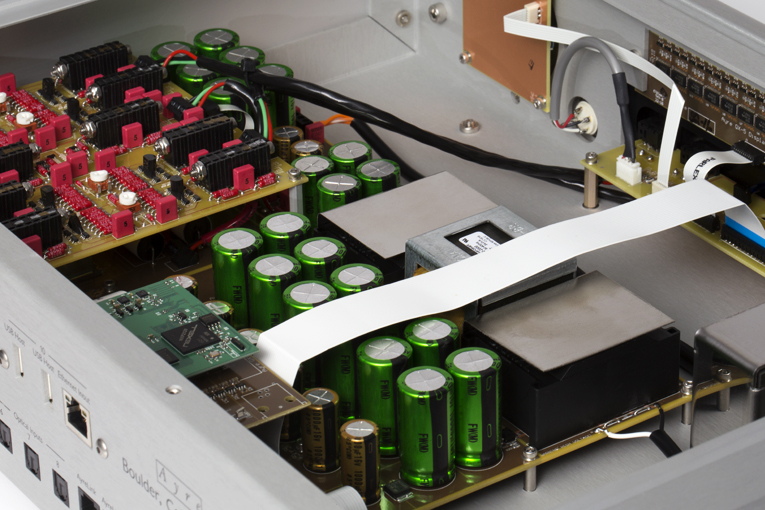
Also like all of Ayre’s current digital sources, the QX-5 includes the company’s minimum-phase digital filter, which has a slower frequency-response rolloff than the more common linear-phase (brick-wall) filters. Ayre’s implementation of this filter has, they claim, resulted in the complete elimination of the pre-ringing and a significant reduction of the post-ringing that affect the transient response of linear-phase filters. They argue that when the filter’s ringing is shifted to follow the musical transient, the brain interprets the sound as being more natural. This is explained in greater detail in a white paper posted on Ayre’s website.
To reduce noise introduced by the AC coming out of the wall, the QX-5 is equipped with an Ayre power conditioner that converts high-frequency noise from the power line into heat, which doesn’t affect the sound. Two AyreLink communication ports on the rear panel permit multiple Ayre components to be daisy-chained so that functions such as the simultaneous powering on or off of all the components can be achieved with a single push of a button.
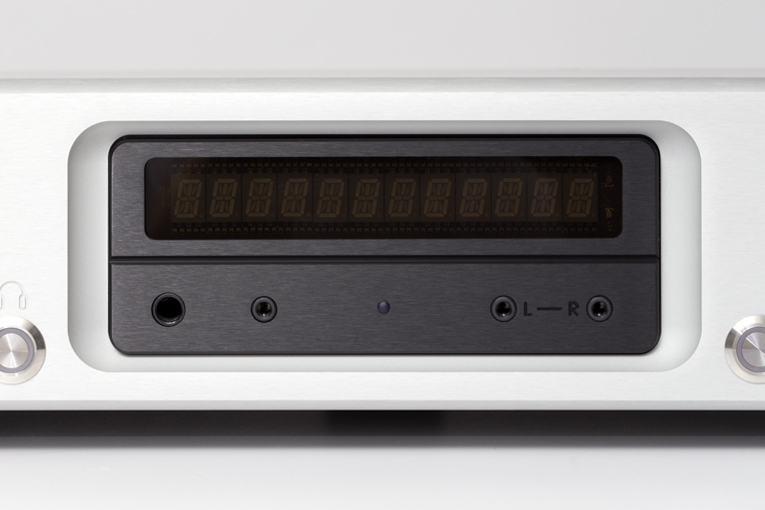
The QX-5 measures 17.25”W x 3.75”H x 13”D and weighs 16 pounds, and its case of brushed aluminum demonstrates high levels of craftsmanship and attention to detail. A large alphanumeric display indicates the source and sample rate of whatever’s playing. Below the display are the headphone connections: on the left, 1/4” and 3.5mm jacks for unbalanced headphones; on the right, left and right 3.5mm jacks for balanced ’phones. Flanking the display at the bottom are two buttons: the left one for headphone functionality and menu navigation, the right one for muting, sleep mode, and more menu navigation. At far right is a control ring for navigating the setup menus, selecting inputs, and, when the QX-5 is used as a preamp, adjusting the volume level. The small, black remote control allows the user to change inputs and volume.
System
I linked the QX-5 Twenty to a Bryston B135 SST2 integrated amplifier with Kimber Kable Tonik interconnects, and the Bryston to my Revel Performa3 F206 floorstanding speakers with AudioQuest Comet speaker cables. Digital data were fed to the Ayre from an NAD C 542 CD player (acting as transport only) via an AMX optical link, and from my Apple MacBook computer via an AudioQuest Forest USB link. All electronics were plugged into an ExactPower EP15A power conditioner-regenerator. When, partway through the review, Ayre sent me their AX-5 Twenty integrated amp so that I could listen to the QX-5 in balanced mode, I connected them with Nordost Valhalla XLR interconnects.
Sound
Writing for the SoundStage! Network has let me hear a number of high-quality DACs. Most recently, these have included Bryston’s BDA-3 and PS Audio’s PerfectWave DirectStream Junior -- the latter received a 2016 SoundStage Product of the Year Award for outstanding performance. But as impressed as I’ve been with these and other DACs I’ve reviewed, Ayre’s QX-5 Twenty sounded better in my system. For me, it struck the perfect balance of detail and warmth -- for lack of a better term, it simply sounded natural.
In the audiophile lexicon, describing a component’s sound as natural is no more helpful than saying it sounds musical: the terms don’t tell the reader much. But the ease and fluidity with which the QX-5 Twenty reproduced some of my favorite recordings kept me jotting down those adjectives in my listening notes. There was something very organic about its sound. No, the Ayre didn’t possess the warmth and fullness of a good analog system, but, much like listening to vinyl, the QX-5’s sound was so smooth I could listen to it all day -- and without the extra effort required to play LPs.
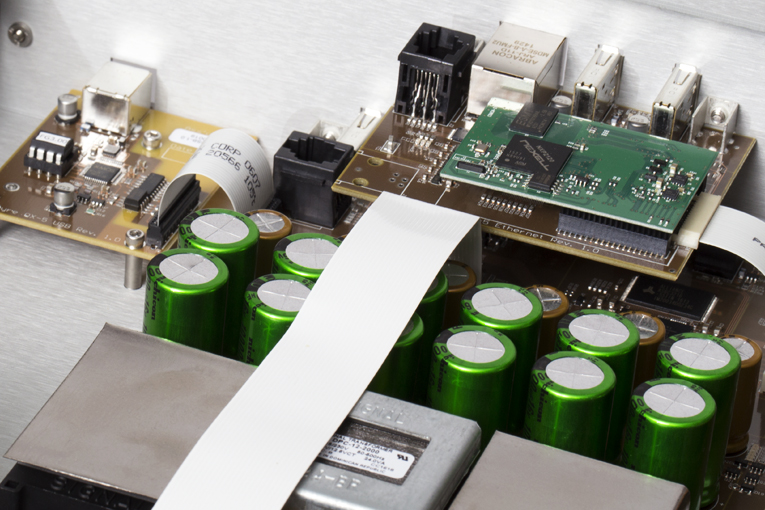
As I listened, via the Ayre’s USB input, to “Moon,” from Björk’s Biophilia (16-bit/44.1kHz AIFF, Nonesuch), the quartet of harps sounded pristine, the notes from the instruments’ myriad strings ringing clearly in my room. The bass had a warm thump, and the sound extended well past the speakers’ outer edges. The layered vocals appeared holographic and extended toward the back of the stage with a sense of depth that was convincing. The sound of this track was relaxed but not reticent through the QX-5 Twenty, which communicated the music in a manner so realistic that I imagine it could be improved on only by hearing it in person.
I tend to be attracted to more detailed-sounding components, so long as they don’t sound so analytical that they make me feel as if the music is being dissected with a scalpel. In this regard, the highly resolving QX-5 Twenty was an ideal match for me, sorting out instrumental lines and preventing them from blurring into one another. “Crystalline,” also from Biophilia, sounded every bit as clear as its title suggests. In typical Björk fashion, this piece is rather busy, but the QX-5 had no trouble sorting out and presenting what happens in it. The song climaxes in an assault of rapid-fire percussion that’s the musical equivalent of a machine gun -- the Ayre did an admirable job conveying the intensity of this passage.
The QX-5 Twenty and my longtime reference integrated, Bryston’s B135 SST2, exhibited some audible synergy. The Ayre’s transparency well complemented the Bryston’s low noise floor, to result in a revealing sound. I especially came to appreciate this late at night, when I had to turn down the volume or risk waking the household. In Beethoven’s song “An die Hoffnung” (To Hope), Op.94, with baritone Stephan Genz accompanied by pianist Roger Vignoles (CD, Hyperion CDA67055), the piano seemed almost delicate in contrast to Genz’s powerful voice. The clean sound of the Ayre-Bryston combo helped accentuate the differences between the song’s quietest and most explosive passages, and so was able to preserve the powerful emotions evoked by Beethoven’s setting of C.A. Tiedge’s poem. The following song, “Maigesang” (May Song), felt altogether different -- Vignoles’s notes almost danced from the piano’s strings as the Ayre’s unerring transparency conveyed the composition’s playful lightheartedness. At low volumes, the QX-5 was admirable for the unobstructed window it opened on the music, inviting me to hear, apparently, everything in the recording.
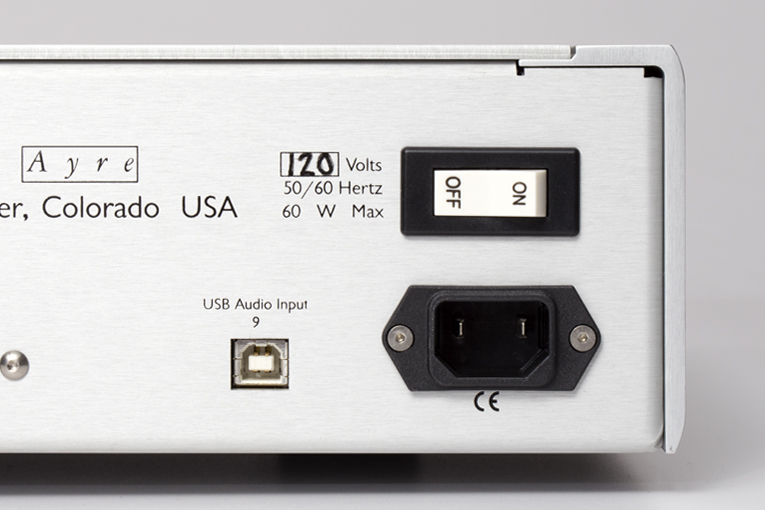
With well-recorded orchestral works, the QX-5 Twenty demonstrated that it was a soundstaging champ. The War Dance from the Suite from Respighi’s Belkis, Queen of Sheba, with Eiji Oue conducting the Minnesota Orchestra (CD, Reference RR-95CD), produced a wide, deep stage that easily filled the front of my room. The QX-5 had no problem precisely outlining the position of each section of the orchestra as it performed this fiercely intense dance. Unlike the Beethoven songs, for only a single voice and piano, the richly orchestrated Respighi is dense and complex. However, the Ayre made it easy to sort out what I was hearing while communicating the full measure of its fiery energy.
I ran an Ethernet cable from an Apple Airport Extreme router to the QX-5’s Ethernet input so that I could play music from my computer via Roon Labs software. It was the first time I’d used Roon, and I fell head over heels in love with it pretty fast. Roon sounds really good -- probably the most important thing for anyone reading this review to know -- and its user interface is intuitively easy, which is fairly important to a Luddite such as myself.
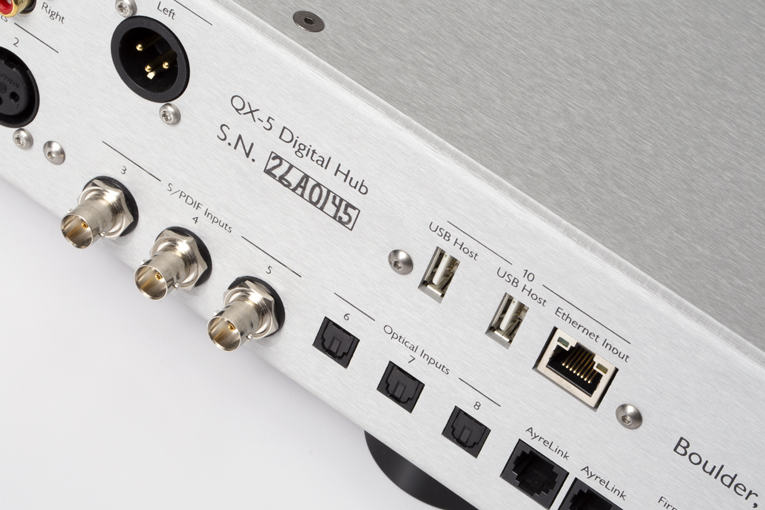
Usually, when I put on a Tori Amos recording to review an audio component, it’s because I want to hear how it reproduces her voice. But listening to “Muhammad My Friend,” from her Boys for Pele (16/44.1 AIFF, eastwest A2 82862), through Roon via Ethernet via the Ayre, was a different experience. There was nothing wrong with the reproduction of Amos’s voice, but I found my attention more focused on the full-bodied tone of her piano. When hammers struck strings, the resulting notes had a weight and presence that emphasized the sheer size of this Bösendorfer concert grand. And when Clarence J. Johnson III’s soprano saxophone briefly appears at the end of the track, it seemed to float above the piano and thus expand the overall soundstage. It’s interesting when a change in my audio system makes me hear highly familiar music in a different way. The QX-5 Twenty and Roon gave me that experience, and reinvigorated my interest in using my computer, not my CDs, to listen to my favorite tunes.
Balanced listening
Ayre Acoustics is a big proponent of running audio systems entirely balanced; however, since my Bryston B135 SST2 isn’t so equipped, they sent me their AX-5 Twenty integrated amplifier. With balanced interconnects linking the QX-5 to the AX-5 and spade-terminated Nirvana speaker cables connecting the Revel Performa3 F206es, I listened to “Your Rocky Spine,” from the Great Lake Swimmers’ Ongiara (CD, Nettwerk 06700306913). I heard an extension of what the QX-5 did on its own: a smooth, natural sound that was ever so slightly laid-back, but with a high level of detail. After spending time listening to this Ayre-based system, it became fairly evident that the two Ayre Twentys, the AX-5 and QX-5, shared a house sound. To say that I was impressed would be an understatement.
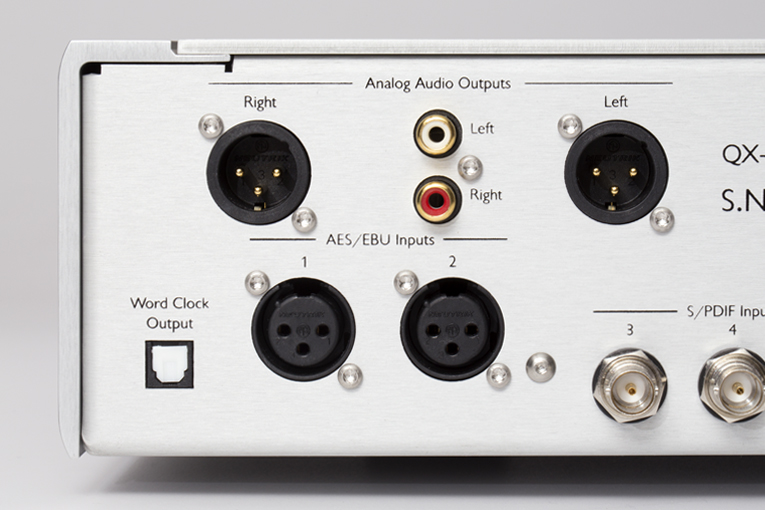
Wanting to hear more acoustic stringed instruments, I played Jerry Garcia and David Grisman’s Shady Grove, an album of bluegrass music (CD, Acoustic Disc ACD-21). The QX-5 recognized the disc as an HDCD, a 20-bit format developed by Pacific Microsonics over two decades ago that never caught on with many record labels. Even if I don’t always mention it, I’ve listened to “Louis Collins” through most of the components I’ve reviewed, and I’ve never heard it sound better than it did through the QX-5 and AX-5. Shady Grove is wonderfully recorded, and the Ayres let me hear that. The QX-5 placed the musicians on a broad, deep stage, their positions clearly outlined. The notes of the guitar, mandolin, banjo, and double bass seemed to pop from the strings in a way so lifelike they may as well have been in the room with me. I don’t know how it could have sounded any better.
Comparisons
When the QX-5 Twenty arrived, I still had the review sample of PS Audio’s PerfectWave DirectStream Junior DAC. At $3999, the DSJ costs less than half the Ayre’s price, but boasts a host of connectivity options. What distinguishes the Junior from the QX-5 is that it’s based exclusively on pulse-density modulation (PDM), aka Direct Stream Digital (DSD), a single-bit, high-sample-rate format. Unlike the Ayre, which uses pulse-code modulation (PCM), the PS Audio converts all incoming signals to DSD. Although the QX-5 can decode up to DSD128, it doesn’t convert PCM to DSD, but rather keeps the signal in its native low-sample-rate, multibit format. Furthermore, the DAC employed in the DirectStream Junior is not an off-the-shelf chip, but one designed only for this component.
With the recording of Beethoven’s “An die Hoffnung,” the Ayre and PS Audio revealed that their sounds had much in common. Both were detailed and nuanced, with a transparency that made it easy to hear deeply into the recording, and their soundstages were of similar size. The only difference I could hear was a bit more air around Genz’s voice through the QX-5, but even this was subtle. Both performed exceptionally well; I enjoyed whichever DAC I happened to be listening to.
With “Maigesang,” I heard essentially what I’d heard in “Hoffnung”: a slightly better sense of acoustic space around Genz through the Ayre. In my review of the Junior I’d praised it for its fluidly musical sound -- a major reason it won a 2016 Product of the Year award. However, as I switched between it and the Ayre, I found that the QX-5 Twenty sounded every bit as smooth as the DirectStream Junior.
Curious to try another vocal recording, I listened to the a cappella “Me and a Gun,” from Tori Amos’s Little Earthquakes (CD, eastwest CD 82358). I’ve always loved this haunting track -- an intimate, revealing piece of music that I’ve also found useful in reviewing equipment because there’s nothing but Amos’s voice to focus on. Through the Ayre and PS Audio, I was treated to everything I love about this track, and it sounded identical through both components. The airier sound of Stephan Genz’s voice I’d heard through the QX-5 wasn’t apparent with the Amos -- I would have had little confidence in my ability to distinguish between them in a double-blind listening test. Perhaps I shouldn’t have been surprised by this: in my experience both the Ayre and PSA offered digital playback that is about as good as it gets; even if they didn’t always sound the same, neither was able to highlight any shortcoming in the other. Both were exceptional at what they did.
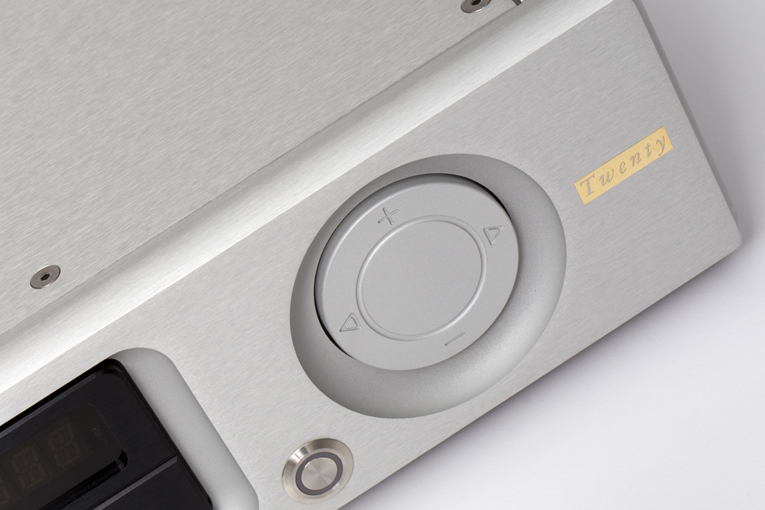
Although Bryston’s BDA-3 DAC had long since been returned when the Ayre arrived, I own its predecessor, the BDA-2, and did some additional listening to hear how it stacked up against the QX-5 Twenty. At $2395, the BDA-2 costs about one-quarter the Ayre’s price, and lacks some of the Ayre’s flexibility: It doesn’t have a headphone amplifier or Ethernet input, and it can’t serve as a preamplifier or decode DSD.
As it was the Christmas season, I cued up some festive tunes from Yuletide Fires, by the Vancouver men’s choir Chor Leoni (CD, Cypress Choral Music CCR0601). The sounds of “Hodie Christus Natus Est” through the Ayre and the Bryston were nearly indistinguishable. However, I heard more reverb with the Ayre -- the sound was fuller. The size of the church sanctuary in which the recording was made sounded wider and deeper than through the Bryston. The same was true with “Huron Carol” -- as I switched between the two DACs, the Ayre delivered the slightly bigger soundstage and a fuller, warmer sound. With “Veni, Veni Emmanuel,” the stage was a touch shallower through the BDA-2. The two DACs’ retrievals of detail were similar -- neither allowed me to hear deeper into the music than the other.
With “Decks Dark,” from Radiohead’s A Moon Shaped Pool (CD, XL Recordings XLCD790), the Ayre again sounded warmer than the Bryston. Voices sounded similar through both, but, as with Yuletide Fires, the music sounded more grand through the QX-5. The lowest register of the acoustic guitars in “Desert Island Disk” was a bit weightier through the Ayre, though this wasn’t terribly surprising, given the QX-5 Twenty’s overall warmer sound. In general, I preferred the QX-5 Twenty to my BDA-2 for the greater airiness I heard through it.
Conclusion
Ayre Acoustics’ QX-5 Twenty is the finest-sounding DAC I’ve used in my system. At $8950 it isn’t exactly affordable, but given the high costs of some other companies’ flagship DACs, the Ayre’s price isn’t unreasonable. Furthermore, the inclusion of a headphone amplifier and the fact that it can be used as a preamp greatly increase its value, when you consider the potential cost of buying such components separately.
My job is to describe what I hear, and leave it up to readers to decide what they consider good value -- assuming, of course, that price is considered at all. For example, while my Bryston BDA-2 costs only $2395, I’m still very happy with it -- the sound quality it provides at that price makes it of high value to me. At $8950, is the QX-5 Twenty 3.74 times better? Of course not, but that’s not the point. If it sounds better than the BDA-2 -- and to me, it does -- that difference may well justify the additional cost to someone who wants the best and can afford it. But that’s not for me to decide.
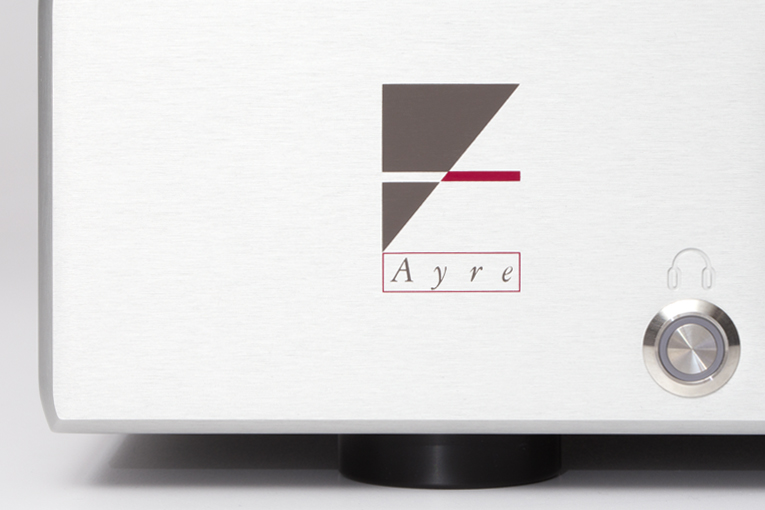
What I can say is that the QX-5 Twenty is a beautifully designed, well-built component that could easily anchor a state-of-the-art sound system for years to come. No matter how you play your music, it will accommodate all of your digital sources. Furthermore, if you’re willing to experiment with software such as Roon’s music player, you may find, as I did, that combining it with the QX-5 elevates your computer-based listening to a whole new level. I expect that those who buy a QX-5 Twenty will spend a lot of time revisiting their music libraries, just to hear how good they sound through the Ayre. Any component that makes you want to go back and listen to music you know and love, just to rediscover it, is special indeed, and the QX-5 Twenty fits that description. Highly recommended.
. . . Philip Beaudette
philipb@soundstagenetwork.com
Associated Equipment
- Speakers -- Amphion Argon3L, Revel Performa3 F206
- Integrated amplifier -- Ayre Acoustics AX-5 Twenty, Bryston B135 SST2
- Digital sources -- Apple iMac computer running Roon and MacBook running Audirvana, NAD C 542 CD player, Bryston BDA-2 DAC, PS Audio PerfectWave DirectStream Junior DAC
- Speaker cables -- AudioQuest Comet, Nirvana Audio SL
- Interconnects -- Kimber Kable Tonik, Nordost Valhalla XLR
- Digital links -- AudioQuest Forest USB, i2Digital X-60 coaxial
- Power conditioner -- ExactPower EP15A
Ayre Acoustics QX-5 Twenty Digital-to-Analog Converter
Price: $8950 USD.
Warranty: Five years parts and labor.
Ayre Acoustics, Inc.
2300-B Central Avenue
Boulder, CO 80301
USA
Phone: (303) 442-7300
Fax: (303) 442-7301
Website: www.ayre.com






















